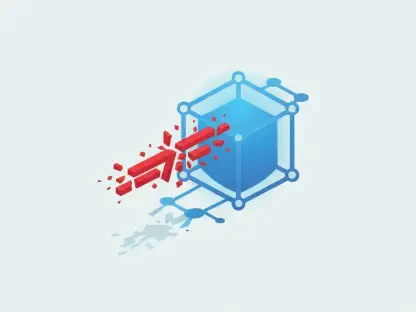In a world where artificial intelligence continues to permeate the deepest corners of industry and everyday life, businesses seeking to optimize their operations are increasingly turning to generative AI infrastructure tools. These solutions are integral for enhancing machine learning projects, aiding companies in achieving seamless integration with existing systems, ensuring compliance, and offering scalable solutions. Firms must choose wisely to meet current demands and prepare for an ever-evolving technological landscape. This exploration dives into six standout generative AI tools recognized for their capabilities and features designed to meet contemporary business demands in 2025.
Advances in AI Ecosystem Integration
Vertex AI: Enhancing Google’s Ecosystem
Vertex AI is a standout in the generative AI space, heralded for its remarkable integration capabilities within Google’s vast ecosystem of services. Its design caters to a wide range of NLP workflows, offering businesses scalable solutions with pre-built machine learning models that can handle complex computational processes seamlessly. One of the primary attractions of Vertex AI is its managed notebooks, which streamline the handling of data and allow for efficient training pipeline management. It also supports the Triton inference server, which enhances deployment capabilities and ensures robust performance during the inference phase of machine learning workflows.
Despite its many merits, some users raise concerns about its pay-as-you-go pricing structure. While this model can offer flexibility, it can also result in unpredictable costs, especially for businesses running extensive or high-frequency operations. Inconsistencies in documentation further highlight the necessity for comprehensive user support to ensure all features are optimally utilized.
Comprehensive Offerings of AWS Bedrock
AWS Bedrock stands as another formidable tool within the AI infrastructure domain, offering businesses extensive options to access multiple foundational models directly through the AWS cloud. This platform is particularly lauded for its ability to deliver superior performance by leveraging AWS’s robust infrastructure and diverse tools, enabling enterprises to enhance their machine learning frameworks efficiently. The strong integration with the AWS ecosystem allows companies to capitalize on existing resources, seamlessly expanding capabilities without enduring major overhauls or redeployment problems.
Despite its considerable benefits, users report challenges in understanding Bedrock’s pricing and orchestration visibility, revealing a need for clearer articulation of usage and costs. This is a crucial consideration for companies aiming to maintain budget predictability and transparency. However, AWS Bedrock remains a top choice for many due to its scalability and comprehensive support for various foundational models, positioning it as a versatile tool for businesses ready to enhance their AI capabilities.
Leveraging Computational Power and Flexibility
Google Cloud AI Infrastructure: Scaling Machine Learning
Google Cloud AI Infrastructure offers an exemplary solution for businesses in need of scalable machine learning capabilities. Notably, its TPU support provides significant advantages for high-volume data processing, allowing companies to efficiently manage vast datasets with increased speed and reduced latency. Integration with Google Cloud services is a highlight, providing companies with an ecosystem where they can leverage high-performance data pipelines while maintaining a streamlined workflow from data ingestion to deployment.
A particular challenge encountered by users is the steep learning curve associated with Google Cloud AI, which may impede immediate adoption and necessitate comprehensive training or onboarding processes for technical teams. Additionally, cost management is a key focus to ensure that the scalability and power of the infrastructure do not lead to unexpected expenses. Despite these considerations, its strengths in supporting scalable machine learning pipelines render it particularly attractive for enterprises looking to expand their data-driven operations.
Targeted Solutions with Botpress
Botpress provides solutions specifically tailored towards chat automation, empowering both technical and non-technical users through a low-code/no-code environment. This capability allows businesses to implement AI-driven chat functionalities quickly, enhancing customer interaction and operational efficiency. The user-friendly interface is beneficial for organizations seeking to incorporate sophisticated chat automation without allocating extensive resources to development.
However, while the low-code/no-code interface invites ease of use, some users encounter performance lags that can hinder real-time interaction quality. Challenges with documentation further complicate the user experience, highlighting the need for improved support and resources for troubleshooting. Nonetheless, Botpress remains a favored choice for organizations aiming to accelerate chat automation deployment due to its intuitive design and adaptability.
Integration with Hardware and Development Tools
NVIDIA AI Enterprise: High-Performance Model Training
NVIDIA AI Enterprise leads with its focus on high-performance model training, facilitated by integration with NVIDIA’s GPU hardware. This specialization allows enterprises to train models more effectively, optimizing deployment and ensuring that AI solutions are delivered with precision and power. With a reputation for pushing the boundaries of computational capability, NVIDIA AI Enterprise supports organizations in harnessing the full potential of AI.
Nevertheless, some companies may find the costs associated with NVIDIA technology daunting, particularly if they do not already engage extensively with NVIDIA GPUs. Additionally, for users working with non-NVIDIA hardware, there may be limitations that necessitate careful consideration before committing to this infrastructure. Despite these considerations, its alignment with high-performance AI training continues to make it indispensable for enterprises focused on cutting-edge technological adoption.
Comprehensive Development with Saturn Cloud
Saturn Cloud is distinguished for its adaptability in supporting scalable Python and AI development, with resources that accommodate both CPU and GPU utilization. It supports seamless integration with development tools, making it a preferred choice for teams seeking streamlined processes from development to production. Saturn Cloud’s generous free tier offers access to powerful capabilities at minimal initial cost, making it an attractive proposition for smaller teams or projects with restrictive budgets.
There are, however, challenges in session management within the free tier, which can complicate continuous workflows and uninterrupted development progress. Furthermore, the availability of more detailed tutorials could significantly benefit beginner users, assisting them in navigating the platform’s features and maximizing their potential. Nevertheless, the extensive capabilities of Saturn Cloud make it an invaluable tool for scalable AI operations, fitting seamlessly into diverse development environments.
Concluding Perspectives on Generative AI Tools
In today’s rapidly advancing technological age, artificial intelligence has become deeply embedded in both industries and daily life. Companies aiming to refine and enhance their operational efficiency are increasingly adopting generative AI infrastructure tools. These tools are crucial for boosting machine learning endeavors and providing seamless integration with existing systems. They ensure compliance with industry standards and offer scalable solutions that can grow alongside technological demands. Companies must make informed decisions when selecting these tools to address current needs and anticipate the challenges of a continuously evolving tech landscape.
This discussion centers around six exemplary generative AI tools that stand out for their impressive features and capabilities tailored to meet the business needs of 2025. By leveraging these tools, businesses can position themselves competitively, ensuring they adapt and thrive in a world where AI is not just a trend but a fundamental component of innovative business strategies. As companies seek to harness the full potential of AI, ensuring their chosen tools are robust and versatile will be key to navigating and succeeding in the dynamic environments of the future.









